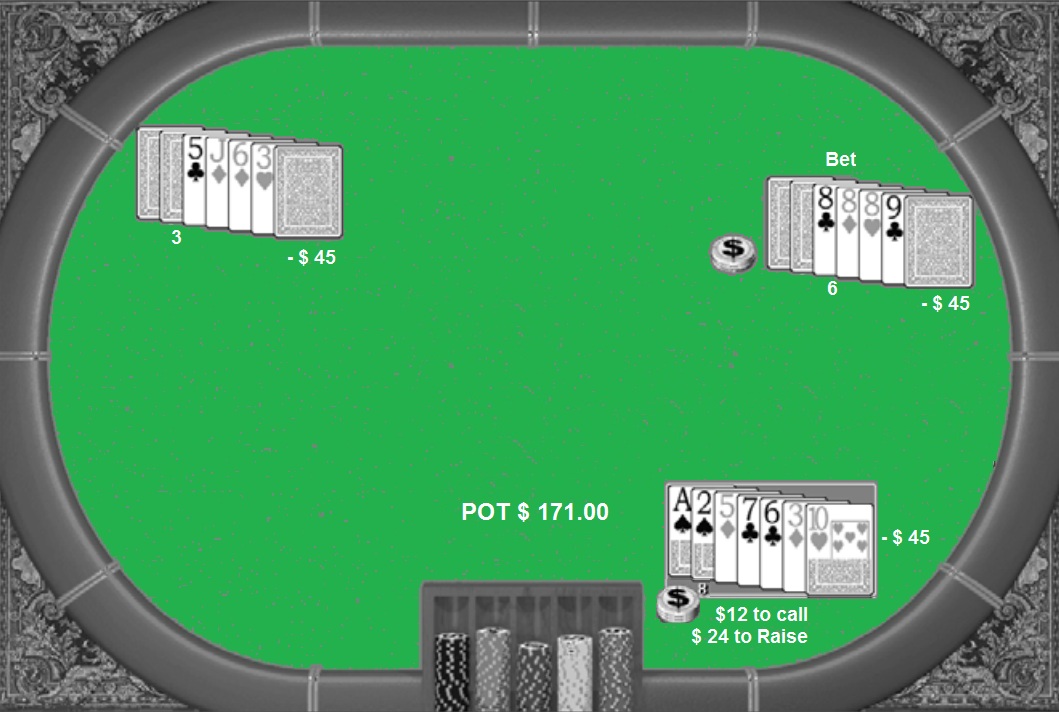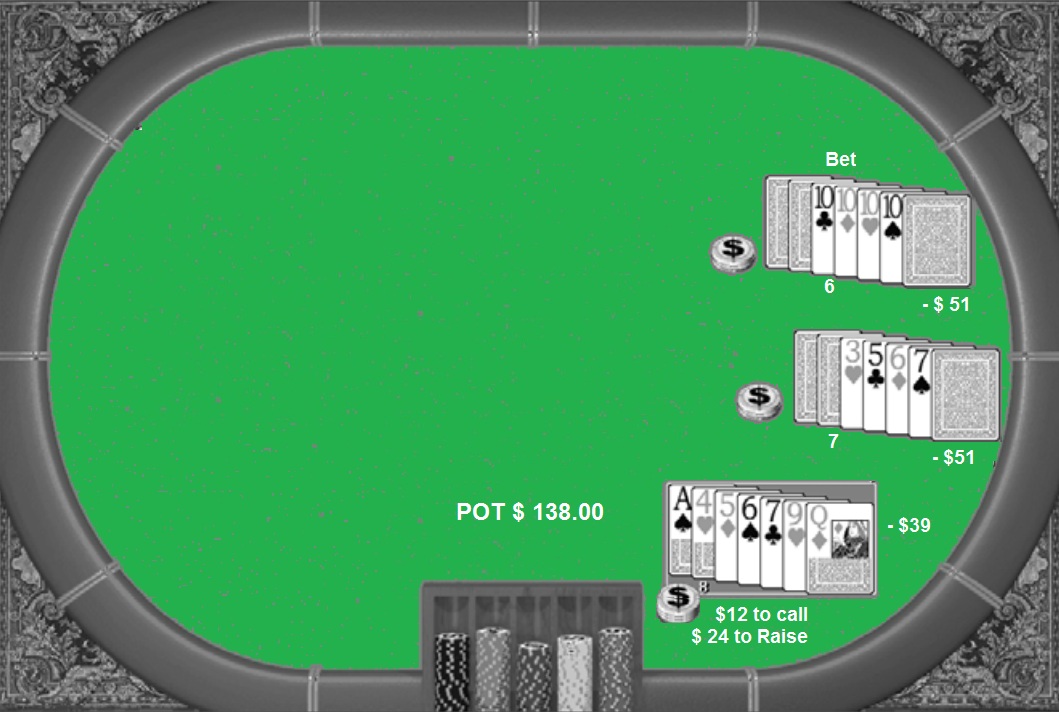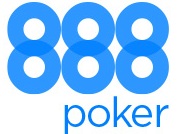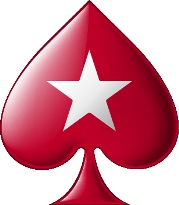Seven-card Stud poker high-low can be a tough game to figure out on the river. Players don’t need to declare whether they’re going high, low, or both, so your hand-reading skills need to be sharp. You also need to remember dead cards accurately in order to calculate odds as appropriate. Playing the high side in seven-card Stud high-low requires the same skills as when you’re playing the standard version of the game, but you should give more credence to players who might have caught low trips and straights. If you do have the best possible high hand, however, bet and raise aggressively to force any competing low draws to put in extra dollars.
Regardless of what poker hand you have, you should always determine the best possible low hand an opponent could have and whether you have a cinch hand for either high or low. The figure below shows one possible scenario.

half of the pot
In this example, you have 6432A for low and your opponent shows no card lower than a Five, which means your opponent can have no better hand than 6532A, which you beat. When no set of three hole cards can beat you, you have what’s known as a board lock, but it can be tough to figure out whether you have all of your opponents locked on either the high or low side. You typically get 30 seconds to act when you play online, so be sure to take some time on each street to update your reads. Use your opponents’ thinking time, too! Ignore the television, ignore your friends sending you instant messages, and ignore the cat when money’s on the line.
Playing When You Have the Nut Low
When you have the single best possible low hand of the remaining hands, rejoice and bet until they make you stop. However, if one of your opponents could tie you for the low, and the action indicates they are going for low, check and call if you don’t have a credible shot at winning the high side of the pot. Figure 11.13 shows one hand where you should consider checking and calling.

The opponent at the top left of the screen doesn’t have a reasonable high draw, so you have to figure that player went for low and probably got there. The best possible low hand ties yours with 7632A, but the open trips to your right indicate that you have absolutely no shot at the high half of the pot. The high hand is sure to bet, so your best option is to check if possible and call if you have to. You can win, at most, half the pot, but winning half, or even a quarter, of the pot, is better than winning none of it.
Playing When You Have the Second or Third Nut Low
Judging your opponents’ hands in seven-card Stud high-low is trickier than it is in Omaha high-low because players have only two down cards until the third one arrives on the river. Experienced Omaha high-low players make a lot of money off of players who stay with the second and third best low hands, but it’s less wrong to stay with the second and third nut low in seven-card Stud high-low. As an example, consider the hand in the next figure:

Neither you nor your low opponent can beat quads, so all you have to worry about is whether you can win on the low side. You have a 7654A low, so your opponent needs either an Ace or a Deuce in the hole to win. Of course, your opponent doesn’t know that you have A4 in the hole, so you might get lucky and be able to flat call the big hand’s bet on the river. But what do you do if the high hand bets, you call, and your opponent for low raises? Now you have to consider the odds and the player. On the mathematical front, your opponent has three shots at one of the remaining seven Aces or Deuces. There are 20 dead cards that don’t count against the draw (the seven you hold, the eight your two opponents hold, and the five that were discarded on third street), so the probability of each of your opponents’ hole cards not being an Ace or Deuce is
25/32 × 24/31 × 23/30 = 13,800 / 29,760 = 46.37%
In purely mathematical terms, you’re a very slight underdog in this situation. The high hand is sure to make it three bets, though, so you’re in for at least three, and maybe even four, bets if the other low player caps it. It’s all down to your judgment at this point. Does your opponent want to blow you off the hand, or do they have you locked out?
Do note how the numbers change if another of the Aces or Deuces is gone. With only six cards to draw to, you become a slight favorite.
26/32 × 25/31 × 24/30 = 15,600 / 29,760 = 52.42%
Each additional dead Ace or Deuce adds 6.05 percent to your chances of winning, but you still stand to win a few extra bets or lose a bundle.
Playing When You Have an Emergency Low
Emergency lows, where you back into a hand such as 87653 while you’re drawing to complete a high hand, are easier to play in seven-card Stud high-low than they are in Omaha because you have more information about which cards are out. The calculations in the second- and third-nut discussion apply here as well. If you have a high hand or a low hand that can compete with the other players’ hands, go ahead and call. Just remember that if an opponent needs one card to beat you, they only need seven outs to be a mathematical favorite. For example, if your opponent raised before the flop with a good low card showing and called a pair’s bet on fourth street, you might want to jettison the hand and cut your losses.










